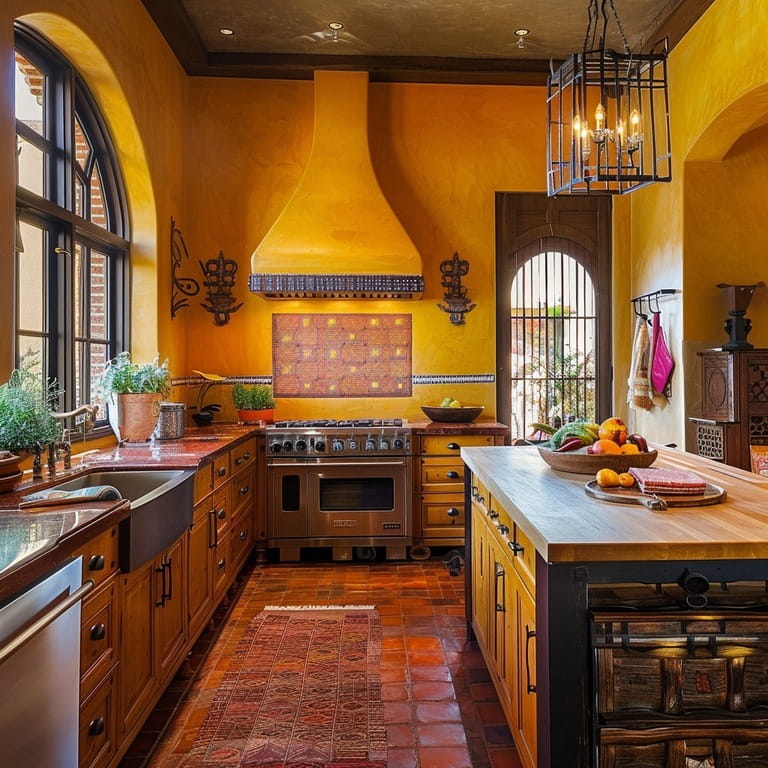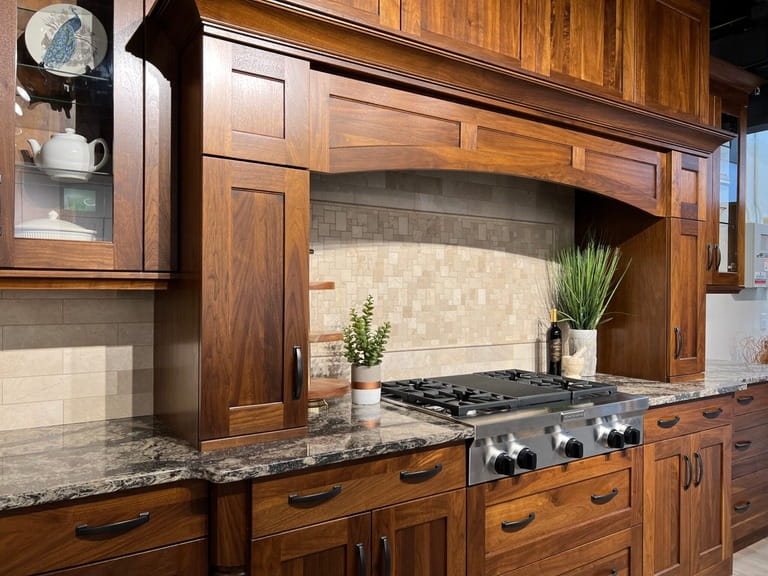In a scene from my favorite film, "Under the Tuscan Sun," the protagonist stumbles upon an abandoned villa in the heart of Tuscany. The villa's kitchen, though dilapidated, is bursting with potential: weathered wooden beams, sun-drenched terracotta tiles, and a charmingly rustic fireplace. This cinematic moment captures the essence of the Mediterranean kitchen—a blend of history, warmth, and unpretentious beauty.
Inspired by such tales of transformation and nostalgia, this article will guide you through the key elements of Mediterranean kitchen design, helping you recreate that same enchanting atmosphere in your own home.
1. Warm, earth -toned dominant colors
Sun-kissed hues

How can you make your kitchen bask in the golden glow of Southern Europe? Use sun-kissed hues that are vibrant and energetic, capturing the essence of the Mediterranean sun and the sun-drenched spirit of the region.
Shades of terracotta or clay

If you want your space to be infused with a warm embrace of terracotta or clay - shades that evoke the charm of traditional Mediterranean rooftop and pottery, consider the rich, reddish brown hues, or burnt orange hues.
Olive green

Source
Olive trees are the Mediterranean culture’s symbol, so why not add olive green to the space to create a Mediterranean-style kitchen? This color reflects the lush foliage of olive trees, bringing in a refreshing natural element.
Creamy white

Picture your kitchen bathed in the soft glow of creamy white, much like the charming whitewashed villages along the coast. This perfect background allows other design elements in your space to shine.
Blue shades

The colors of the Mediterranean Sea have inspired many people to create a Mediterranean-style kitchen. If the light blue kitchen in the picture isn’t your cup of tea, don’t worry. You've got options! How about diving into deeper blues or bright turquoise shades.
2. Exposed beams

While it's true that modern construction techniques often eliminate the need for visible structural beams, but exposed beams remain a popular design element for their aesthetic appeal. In modern kitchens, exposed beams can be used to add character, warmth, and a sense of history.
You can install faux beams made from lightweight materials such as polyurethane or hollow wood. Reclaimed wood is another option, which is eco-friendly and can add a sense of authenticity and history.
3. Natural Mediterranean materials
Stone

Stone surfaces such as marble, granite, and limestone are traditional materials used in Mediterranean architecture and design. To build a Mediterranean kitchen, incorporating stone surfaces in countertops or flooring can evoke the rugged beauty of the region’s landscapes.
Wood

Wood in the Mediterranean aesthetic is the natural and weathered material that exudes a natural beauty and charm. You can create a natural-looking wooden kitchen using rustic beams, cabinetry, furniture.
Metal

Mediterranean design also embraces metallic accents in warm tones such as bronze, copper, and gold. Thus, lighting fixtures, decorative hardware, and ornamental details in metallic finishes like a copper hood can contribute to a Mediterranean kitchen.
4. Arch designs

Arched doors, windows, and colonnades are key design elements in Mediterranean style. You can incorporate this feature into your kitchen by building an arched doorway, creating a beautiful arched window, or adding a large arched range hood to your kitchen backsplash.
5. Detailed island corbels

Imagine giving your grand island a touch of classic Greek elegance with Acanthus leaf corbels! They’re not just beautiful; they also add a unique flair of Mediterranean style to your kitchen. Let these intricate corbels transform your space into a stunning Mediterranean kitchen.
Mosaic art

Mosaic art has been a beloved tradition in the Mediterranean for ages, and it’s no wonder that hand-painted tiles have become a hallmark of a cozy Mediterranean kitchen. Consider installing a beautiful arched mosaic tile backsplash right above your stove to bring the spirit of the Mediterranean right into your home.
6. Warm lighting

Instead of cool lighting, use warm lighting in your kitchen. This lighting color emulates the soft, golden glow of the Mediterranean sunsets to enhance the cozy ambiance of your kitchen. Furthermore, the warm lighting can accentuate architectural elements such as wooden beams and textured walls if you strategically install it.
7. Wrought iron

Wrought iron is considered a staple of Mediterranean design. There are many ways to incorporate this feature into your Mediterranean kitchen, such as with railings and curlicue brackets. Alternatively, you can combine warm lighting with wrought iron chandeliers featuring rustic, old-world charm. This combination perfectly complements the Mediterranean style.
8. Ornate details

Source
Mediterranean design style strongly focuses on detailed handiwork like carved cabinets. For a Mediterranean kitchen, you can consider cabinetry featuring intricate moldings and classic panel designs, which add a sense of depth and traditional charm.
9. Open and airy design

Mediterranean living is closely connected to nature, so let’s build a kitchen with large windows and open spaces. This allows natural light to pour in, blurring the lines between indoors and outdoors, fostering a sense of harmony with the natural environment.
10. Create a contrast

Source
Mediterranean design is incredibly versatile. You can create a striking contrast in your traditionally rustic and light-colored Mediterranean kitchen. For example, consider installing a dark, textured accent wall against the light wood of your cabinetry and ceiling.
11. Grow suitable plants for Mediterranean cuisine

Source
Mediterranean cuisine is famous for the diverse uses of herbs and spices in its dishes. So, if you want to add greenery into your kitchen, consider growing herbs and spices commonly used in Mediterranean dishes such as oregano, basil, garlic, rosemary, cumin, turmeric,sage, and saffron.
Designing your own Mediterranean kitchen is all about bringing the features of this area to your space. Ensure that every change you make reflects the true essence of Mediterranean style.













